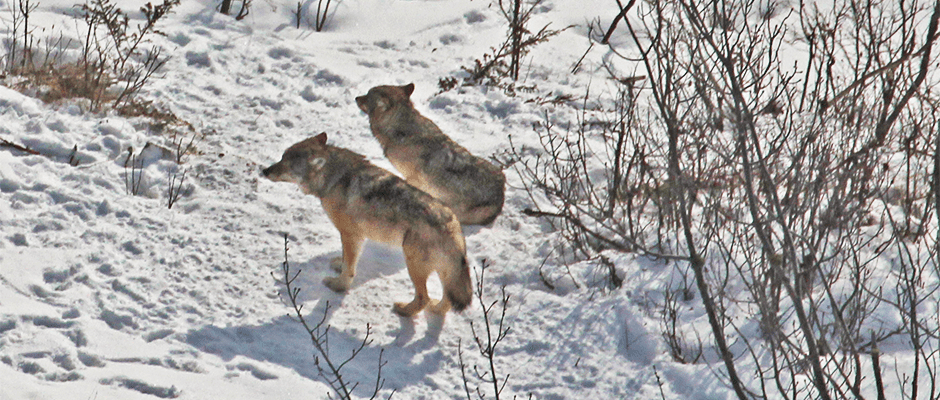Share this article
Isle Royale wolves down to two
A population of just two aging wolves — father and daughter — are the only wolves remaining on Michigan’s Isle Royale, spelling trouble for the apex predator as well as the ecosystem, according to a recent report.
In 2015, researchers spotted an approximately 9-month-old pup with the wolves, but it appeared to have a deformed tail, according to Rolf Peterson, a research professor at Michigan Technological University and a coauthor of the report. In the 2016-2017 winter survey, the pup was no longer there. But Peterson said even if the two remaining wolves reproduced, their pups would be inbred. The two are not only father and daughter. They also share the same mother.
Scientists said the female seemed uninterested in mating with the male, making it unlikely the mere two-wolf population will survive. “I don’t think there’s much mystery there,” Peterson said.
Historically, the wolves periodically moved between the island and the mainland in the winters when the lake water froze. However, warmer winter temperatures have recently prevented the lake from freezing regularly, reducing the genetic diversity of the wolves and lowering their population numbers. The wolf population on the island had averaged about 22 individuals in the past 65 years until 2008 when the wolf packs began disappearing and dwindled to a total of only two wolves.
Researchers counted wolves on the remote island in Lake Superior by aircraft. They also took a census of moose and noted that moose populations have grown to an estimated 1,600 in the absence of wolves — up about 21.6 percent in the last six years.
An increase in moose negatively affects vegetation on the island, Peterson said. “They’re pretty ambitious herbivores.”
In an absence of wolf predation, moose are taking over the vegetation, impacting trees and aquatic vegetation such as water-shield, an aquatic, perennial herb that provides nutrition for waterfowl and shelter for fish and other aquatic organisms, Peterson said. Other species such as beavers are also increasing in the wolves’ absence. “That’s why there’s a reason to be quick about trying to address the shortage of wolf predation,” he said.
The National Park Service recently published a document to determine how to manage and conserve the wolves on the island. They determined the best solution would be to introduce 20 to 30 wolves selected from the mainland to maximize genetic diversity and restore predation to the ecosystem. Since the current wolves are approaching old age, Peterson said, they may be dead by the time a potential reintroduction occurs. “There’s a chance, of course, the wolves out there could still be alive,” Peterson said. “But nobody is counting on it.”
The proposal for wolf reintroduction will go through another round of analysis with NPS before a final plan is published. Then, after a 60-day public comment period, a final decision will be made, likely by the end of 2017.
Header Image: A female wolf on Isle Royale rejects the male that is attempting to mate with her. The two remaining wolves on the island are a father and daughter. ©Rolf Peterson








